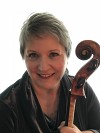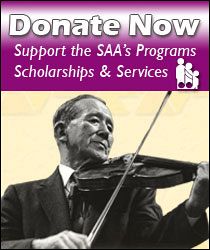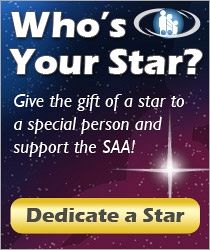Anatomy for String Players
Jul 5 – 7, 2023 in Evanston, IL
at Chicago Suzuki Institute
What
Anatomy for String Players
Instructor: Pamela Devenport
Event Description
My Left Arm:
How Your Body Works to Play an
Instrument.
Pamela Devenport Registered Suzuki Teacher Trainer Suzuki Association of the Americas
As with all movement, great arm motion is a result of many joints, muscles, ligaments, and tendons, all working in congruence to produce the most varied and specific choices in sound. The balance and ratio of use between these many parts changes depending on what part of the instrument you are playing on, yet all parts of the body remain involved.
After the hips, and postural alignment, the first consideration is in the Gleno—humeral joint, or the shoulder ball and socket joint. This joint is supported by many muscles in the front and back of the body, but the alignment of the joint is reliant on the rotator cuff muscles (there are 4). If the head of the humerus is centered, and not forward, back or up in the socket (mis-alignment), the rotation for motion is pretty easy. There are ways to teach shoulder alignment very early in teaching that may insure ease of motion, and more important, self repair, once learned.
Regardless of what body part is more responsible at any point on the instrument, they all have to work together, fluidly, without glitch. There are diagnostic things to know that give clues for steps to the releasing and balancing. Aligning this information on a student is a break down process, and can start general alignment posture, hips whether seated or standing, upper back and shoulder study, and then move towards the fingertips. Initially, noticing what is movement is currently possible for the student is the start of the road to balance and motion ease.
My Left Arm: How Your Body Works to Play an
Instrument.
Pamela Devenport Registered Suzuki Teacher Trainer Suzuki Association of the Americas
As with all movement, great arm motion is a result of many joints, muscles, ligaments, and tendons, all working in congruence to produce the most varied and specific choices in sound. The balance and ratio of use between these many parts changes depending on what part of the instrument you are playing on, yet all parts of the body remain involved.
After the hips, and postural alignment, the first consideration is in the Gleno—humeral joint, or the shoulder ball and socket joint. This joint is supported by many muscles in the front and back of the body, but the alignment of the joint is reliant on the rotator cuff muscles (there are 4). If the head of the humerus is centered, and not forward, back or up in the socket (mis-alignment), the rotation for motion is pretty easy. There are ways to teach shoulder alignment very early in teaching that may insure ease of motion, and more important, self repair, once learned.
Regardless of what body part is more responsible at any point on the instrument, they all have to work together, fluidly, without glitch. There are diagnostic things to know that give clues for steps to the releasing and balancing. Aligning this information on a student is a break down process, and can start general alignment posture, hips whether seated or standing, upper back and shoulder study, and then move towards the fingertips. Initially, noticing what is movement is currently possible for the student is the start of the road to balance and motion ease.
Signup closed.
Trainer Information
Internationally recognized lecturer and master teacher trainer Pamela Devenport teaches Long Term Cello Suzuki Pedagogy at the School for Strings, New York, NY. Ms. Devenport is the author of “Cellostart: Essential Elements of Cello Pedagogy”, and has toured, lectured, and taught all over the world. A lifetime learner, Pamela has degrees and diplomas in Music, Biology, and Energy Healing which all aid in her many presentations about the physical body, character development, and communication.
When
Wednesday, July 5 to Friday, July 7, , 2023
Where
Chicago Suzuki Institute
Music Institute of Chicago
1490 Chicago Avenue
Evanston IL 60201
USA
Phone: 847-905-1500
[javascript protected email address]
www.musicinst.org/csi
The SAA sets guidelines for Suzuki institutes, festivals and teacher workshops and sanctions separate organizations to manage such events. For specific information on schedules, enrollment, pricing, housing, etc. please contact sponsoring organizations directly. Please see the Event Listing Guide regarding the posting of events.


